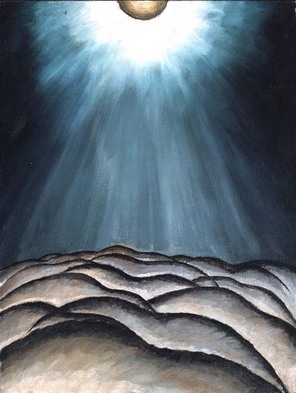Tomorrow’s Wall Street Journal carries my review of the Crystal Bridges Museum of American Art, Alice Walton’s excellent adventure in building a world-class collection in less than a decade. It’s online now.
 Unlike many others in the art world, I have always believed that Walton was doing a good thing, bringing art to an area that sorely lacked the real thing. I have never understood the logic of those who complained about her efforts, as if non-city-dwellers should be content to travel to see art, and then, at the same time, argued for bigger government budgets for art, namely at the National Endowment for the Arts. Don’t they see the connection between knowledge of real art and support for more? I have no problem with the fact that she bought Kindred Spirits from the New York Public Library.
Unlike many others in the art world, I have always believed that Walton was doing a good thing, bringing art to an area that sorely lacked the real thing. I have never understood the logic of those who complained about her efforts, as if non-city-dwellers should be content to travel to see art, and then, at the same time, argued for bigger government budgets for art, namely at the National Endowment for the Arts. Don’t they see the connection between knowledge of real art and support for more? I have no problem with the fact that she bought Kindred Spirits from the New York Public Library.
But that doesn’t mean I gave Crystal Bridges a positive review. It’s good, but not great — at least not yet. For a start, the building has major flaws. I mention a few (the review is less than 1100 words), starting with an awkward entrance. Visitors are met by a graceful semicircular curve inscribed with the museum’s name, only to find that they must walk past this faux entrance, around the corner to an elevator that descends to the lobby. Yes, the museum is lodged in a ravine, but surely a more elegant entryway could have been found. How about escalators, which can be beautiful?
Once you’re inside the galleries, the flow is mostly good — except you can’t get out without retracing your steps or rushing to the finish. Thoughtfully, the building does provide rest areas, filled with art books and seats, and opportunities to go outside. But those grace notes lengthen the time of a visitor’s stay — nothing wrong with that, except for those with limited time.
The “mostly” qualifier above was necessary because of the so-called 20th Century area, which has, as I wrote, side galleries that function as “tributaries off the main rivers of art history.” These are easily missed. The gallery suites for earlier art also have side galleries, but either their location, the lighting, or the hangings somehow lead visitors to them.
On to the collection: Walton has delivered, as I wrote, “great moments” in some galleries (a beautiful Arthur Dove, above, is a promised gift from Walton), and strange ones in others. Despite all the commentary that she was driving art prices through the roof, she didn’t pay out in several areas when the opportunities arose. Here’s one paragraph:
Critics will go through Crystal Bridges looking for gaps, and there are many: J.A.M. Whistler and Edward Hopper are among those represented by token works, for example. There’s no late Winslow Homer, no Willem de Kooning, no combine by Rauschenberg. Ms. Walton passed on recent opportunities to purchase excellent Rothkos, Warhols and Clyfford Stills, to name just three.
But, as I add, Crystal Bridges is still in the making. It will grow and change. Meantime, it’s a darn good start.
More on what else CB does right another time, soon.
Photo Credit: Courtesy of Crystal Bridges Museum
